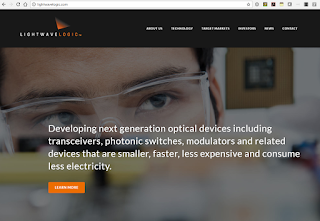by Jay Smith, CTO, Webscale Networks
Forrester Research predicts that 2017 will see a dramatic increase in application migration to the cloud. With more than 90 percent of businesses using the cloud in some form, the question facing IT leaders and web application owners is not when to move to the cloud but how to do it.
The complexities of application integration and migration to the cloud are ever-changing. Migration has its pitfalls: risk of becoming non-compliant with regulations of industry standards, security breaches, loss of control over applications and infrastructure, and issues with application portability, availability and reliability. Sure, there are additional complexities to be considered, but consider that some are simply obstacles to overcome, while others are outright deal-breakers: factors that cause organizations to halt plans to move apps to the cloud, or even to bring cloud-based apps back on premise.
As I see it, these are the deal-breakers in the minds of the decision maker:
Regulatory and Compliance
Many industries, including healthcare and finance, require compliance with multiple regulations or standards. Additionally, due to today’s global economy, companies need to understand the laws and regulations of their respective industries as well as of the countries in which their customers reside. With a migration, first and foremost, you need to know if the type of cloud you are migrating to supports the compliance and regulations your company requires. Because a cloud migration does not automatically make applications compliant, a knowledgeable cloud service provider can ensure that you maintain compliance, and do so at the lowest possible cost. In parallel, your cloud service provider needs to consider the security policies required to ensure compliance.
Data Security
To date, data security is still the biggest barrier preventing companies from realizing the benefits of the cloud. According to the Interop ITX 2017 State of the Cloud Report, more than half of respondents (51 percent) cited security as the biggest challenge in moving to the cloud. Although security risks are real, they are manageable. During a migration, you need to first ensure the secure transport of your data to and from the cloud. Once your data is in the cloud, you need to know your provider’s SLAs regarding data breaches, but also how the provider will remediate or contain any breaches that do occur. A comprehensive security plan, coupled with the provider’s ability to create purpose-built security solutions, can instill confidence that the provider is up to the task.
Loss of Control
When moving apps to the cloud, many companies assume that they will lose control of app performance and availability. This becomes an acute concern for companies that need to store production data in the cloud. However, from concern, solutions are born, and the solution is as much in the company’s hands as in the provider’s. Make sure that performance and availability are addressed front and center in the provider’s SLA. That’s how you maintain control.
Application Portability
With application portability, two issues need to be considered: first, IT organizations often view the hybrid cloud (for example, using a combination of public and private clouds) as their architecture of choice – and that choice invites concerns about moving between clouds. Clouds differ in their architecture, OS support, security, and other factors. Second, IT organizations want choice and do not want to be locked into a single cloud or cloud vendor, but the process of porting apps to a new cloud is complex and not for the faint of heart. If the perception of complexity is too great, IT will opt for keeping their applications on premise.
App Availability and Infrastructure Reliability
Availability and reliability can become issues if a cloud migration is not successful. To ensure its success, first, be sure the applications you are migrating are architected with the cloud in mind or can be adopted to cloud principles. Second, to ensure app availability and infrastructure reliability after the migration, consider any potential issues that may cause downtime including: server performance, network design, and configurations. Business continuity after a cloud migration is ensured through proper planning.
The great migration is here, and to ensure your company’s success in moving to the cloud, it is important to find a partner that has the technology, people, processes and security capabilities in place to handle any challenges. Your partner must be experienced in architecture and deployment across private, public and hybrid clouds. A successful migration will help you achieve cost savings and peace of mind while leveraging the benefits and innovation of the cloud.
 About the Author
About the Author
Jay Smith founded Webscale in 2012 and currently serves as the Chief Technology Officer of the Company. Jay received his Ph.D. in Electrical and Computer Engineering from Colorado State University in 2008. Jay has co-authored over 30 peer-reviewed articles in parallel and distributed computing systems.
In addition to his academic publications, while at IBM, Jay received over 20 patents and numerous corporate awards for the quality of those patents. Jay left IBM as a Master Inventor in 2008 to focus on High Performance Computing at DigitalGlobe. There, Jay pioneered the application of GPGPU processing within DigitalGlobe.
Forrester Research predicts that 2017 will see a dramatic increase in application migration to the cloud. With more than 90 percent of businesses using the cloud in some form, the question facing IT leaders and web application owners is not when to move to the cloud but how to do it.
The complexities of application integration and migration to the cloud are ever-changing. Migration has its pitfalls: risk of becoming non-compliant with regulations of industry standards, security breaches, loss of control over applications and infrastructure, and issues with application portability, availability and reliability. Sure, there are additional complexities to be considered, but consider that some are simply obstacles to overcome, while others are outright deal-breakers: factors that cause organizations to halt plans to move apps to the cloud, or even to bring cloud-based apps back on premise.
As I see it, these are the deal-breakers in the minds of the decision maker:
Regulatory and Compliance
Many industries, including healthcare and finance, require compliance with multiple regulations or standards. Additionally, due to today’s global economy, companies need to understand the laws and regulations of their respective industries as well as of the countries in which their customers reside. With a migration, first and foremost, you need to know if the type of cloud you are migrating to supports the compliance and regulations your company requires. Because a cloud migration does not automatically make applications compliant, a knowledgeable cloud service provider can ensure that you maintain compliance, and do so at the lowest possible cost. In parallel, your cloud service provider needs to consider the security policies required to ensure compliance.
Data Security
To date, data security is still the biggest barrier preventing companies from realizing the benefits of the cloud. According to the Interop ITX 2017 State of the Cloud Report, more than half of respondents (51 percent) cited security as the biggest challenge in moving to the cloud. Although security risks are real, they are manageable. During a migration, you need to first ensure the secure transport of your data to and from the cloud. Once your data is in the cloud, you need to know your provider’s SLAs regarding data breaches, but also how the provider will remediate or contain any breaches that do occur. A comprehensive security plan, coupled with the provider’s ability to create purpose-built security solutions, can instill confidence that the provider is up to the task.
Loss of Control
When moving apps to the cloud, many companies assume that they will lose control of app performance and availability. This becomes an acute concern for companies that need to store production data in the cloud. However, from concern, solutions are born, and the solution is as much in the company’s hands as in the provider’s. Make sure that performance and availability are addressed front and center in the provider’s SLA. That’s how you maintain control.
Application Portability
With application portability, two issues need to be considered: first, IT organizations often view the hybrid cloud (for example, using a combination of public and private clouds) as their architecture of choice – and that choice invites concerns about moving between clouds. Clouds differ in their architecture, OS support, security, and other factors. Second, IT organizations want choice and do not want to be locked into a single cloud or cloud vendor, but the process of porting apps to a new cloud is complex and not for the faint of heart. If the perception of complexity is too great, IT will opt for keeping their applications on premise.
App Availability and Infrastructure Reliability
Availability and reliability can become issues if a cloud migration is not successful. To ensure its success, first, be sure the applications you are migrating are architected with the cloud in mind or can be adopted to cloud principles. Second, to ensure app availability and infrastructure reliability after the migration, consider any potential issues that may cause downtime including: server performance, network design, and configurations. Business continuity after a cloud migration is ensured through proper planning.
The great migration is here, and to ensure your company’s success in moving to the cloud, it is important to find a partner that has the technology, people, processes and security capabilities in place to handle any challenges. Your partner must be experienced in architecture and deployment across private, public and hybrid clouds. A successful migration will help you achieve cost savings and peace of mind while leveraging the benefits and innovation of the cloud.
 About the Author
About the AuthorJay Smith founded Webscale in 2012 and currently serves as the Chief Technology Officer of the Company. Jay received his Ph.D. in Electrical and Computer Engineering from Colorado State University in 2008. Jay has co-authored over 30 peer-reviewed articles in parallel and distributed computing systems.
In addition to his academic publications, while at IBM, Jay received over 20 patents and numerous corporate awards for the quality of those patents. Jay left IBM as a Master Inventor in 2008 to focus on High Performance Computing at DigitalGlobe. There, Jay pioneered the application of GPGPU processing within DigitalGlobe.










































